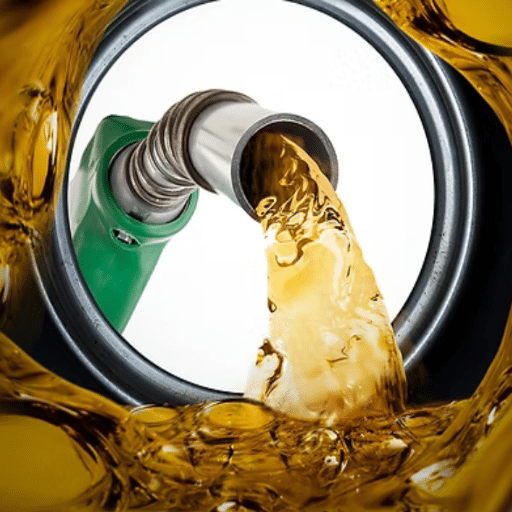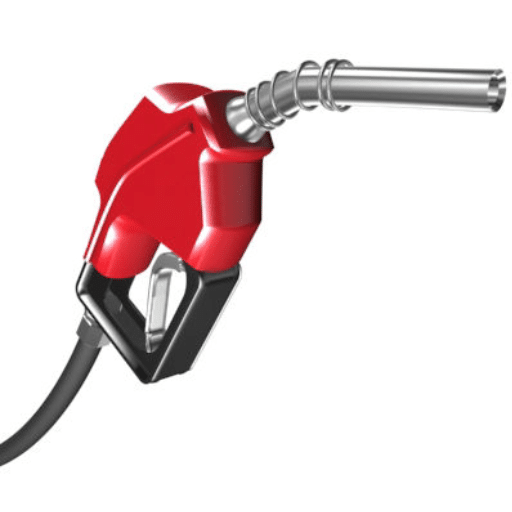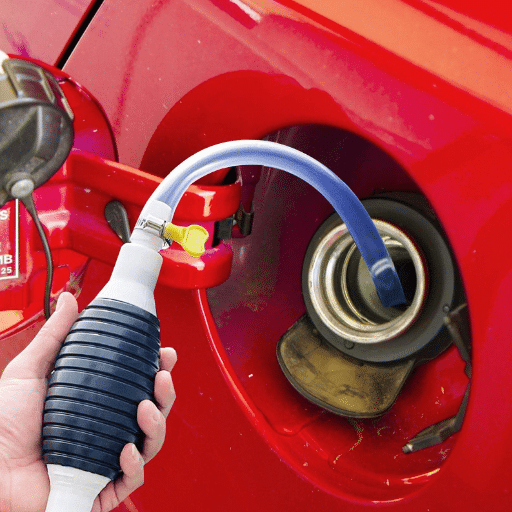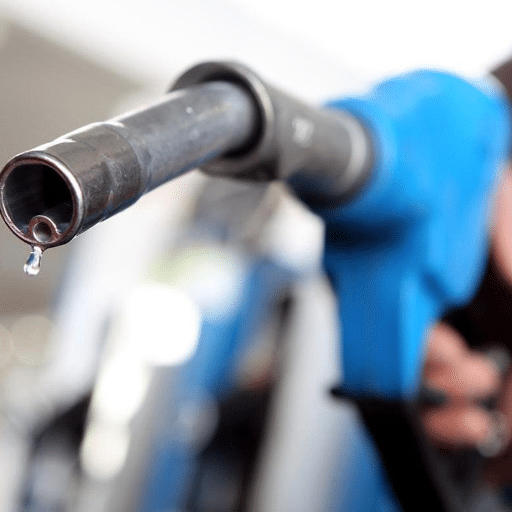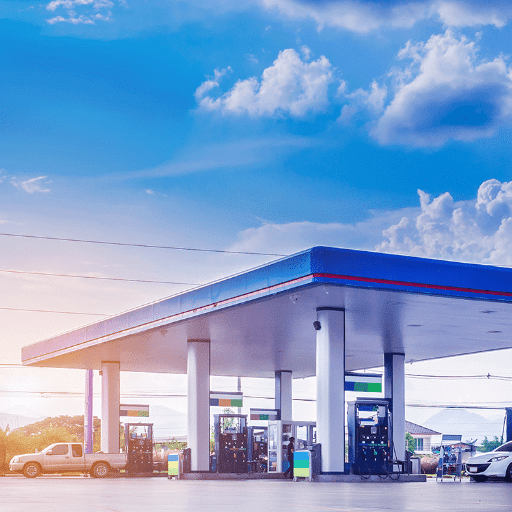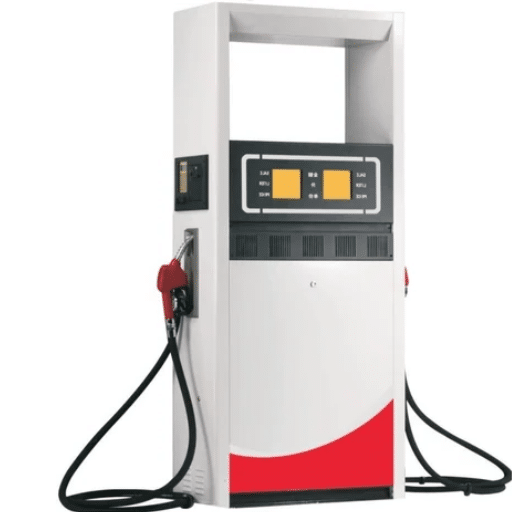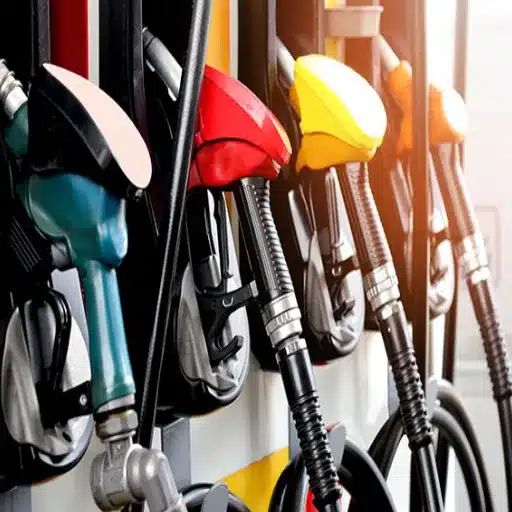Gas stations are a significant part of everyday life, as they fuel millions and enable the smooth operation of the modern transportation system. Have you ever stopped to think about how these businesses generate revenue? In reality, beyond the sale of fuel at the pump, gas stations employ a range of methods to generate profits, sustaining operations in an industry characterized by tight margins. This article sees the gas station as more than merely a fuel vendor. It examines the conventional sale of convenience store goods and other less traditional commercial activities tailored to customer needs. Join us while we uncover the amazing business models your local gas station engages in to stay afloat in a highly competitive market.
Overview of Gas Stations
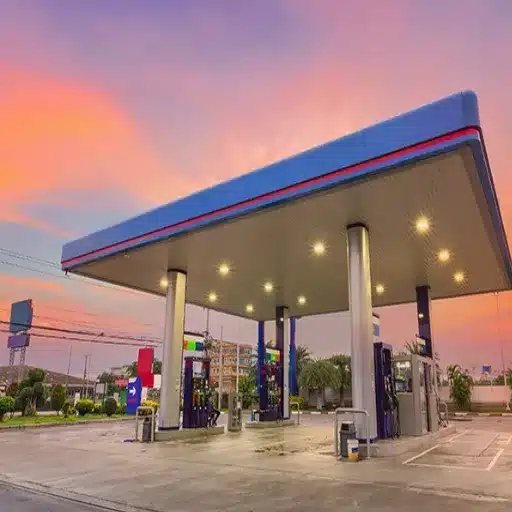
The gas stations provide fuel; gasoline and diesel are sold here for cars. Yet, the operations of a gas station do go beyond merely fuel sales. Convenience stores inside gas stations generate a substantial amount of revenue through the sale of snacks, drinks, and other small items. The cash coming in from washes, lottery tickets, and air pumps also greatly aids the gas stations. Partnering with fast-food chains or offering charging stations for electric vehicles are additional ways to attract a large customer base to a gas station. The gas stations provide these in a bundle to generate more profits while serving end-users with a variety of services.
What is a Gas Station?
A gas station, also known as a fueling station, is a service station that supplies fuel for motor vehicles in the form of gasoline or diesel. These days, of course, gas stations do much more than just sell fuel; they provide a wide range of amenities to suit consumer needs. Recent industry reports estimate that there are nearly 150,000 operational gas stations in the U.S., many of which have convenience stores that generate almost 60% of in-store sales with food and beverage items, including snacks, coffee, and soft drinks.
As for factors that shape the development of gas stations, automation and technology have a significant impact on this process. Many are equipped with self-service pumps; others provide options for digital payments via credit cards, apps, or wallets, and some even allow payments through mobile app integrations. Several newer stations are also installing electric vehicle charging points, positioning themselves to cater to the growing number of electric vehicle users. By 2030, it is considered likely that 20% or more of service stations in select areas may be profiting from electric vehicle charging.
Safety regulations, therefore, play a crucial role in gas stations, as their operations involve handling and storing flammable materials. Gas stations are sanitizing their operations, from fuel storage to spill prevention and environmental safety, to meet strict government-regulated standards. Gas stations, in the end, fuel mobility every day, serving communities and travelers in need of simple stops for either fuel or convenience.
Types of Gas Stations
Gas stations can be segmented into several types based on their offerings and ownership structure:
Full-Service Gas Stations: These stations offer services beyond merely dispensing fuel. A station attendant may come to assist with filling fuel, cleaning windshields, and performing minor vehicle checks, like checking oil levels or tire pressure. Such convenience generally comes at a premium.
Self-Service Gas Stations: As the most prevalent type in several regions, self-service stations allow customers to fill their vehicles with fuel independently. Fuel pumps are installed at these stations, along with payment terminals. Sometimes, a small convenience store is tucked inside the station for snacks and other essentials. They are cheaper and hence mostly convenient for drivers.
Hybrid Gas Stations: In a manner, these are a mix of full-service and self-service options. Customers can opt to pump their own fuel or request assistance based on their preference or specific needs.
Superstations or Destination Gas Stations: These large stations offer a wide range of facility services, including fuel, and may feature full restaurants, car wash services, or larger convenience stores. They cater to long-haul travelers, providing a single-point solution that includes fueling, dining, and relaxation.
Fleet or Commercial Gas Stations: Such stations are intended for commercial and industrial clients, servicing fleet vehicles such as trucks or buses. The stations will often offer special fuels, such as diesel, and may allow for larger bulk purchase arrangements.
Each type of station is crafted to serve different customer needs, from fuel for a quick stop to more extensive support for longer journeys. Being aware of these types helps the driver choose an appropriate station that fits their particular need.
Importance of Gas Stations in the Community
The station’s fueling industry is vital in keeping the daily operations of a community going, transport and commerce being among its key infrastructures. The stations provide fuel for personal vehicles and those transporting people and freight, thereby ensuring mobility and connectivity. According to recently published industry data, the United States alone has over 115,000 such stations for people and goods to travel every day.
Beyond just fueling, gas stations have increasingly been functioning as convenience stores, offering a quick place to grab snacks, drinks, or everyday household essentials. Many have added conveniences such as ATMs, car washes, and charging stations for electric vehicles, all designed to cater to the evolving needs of today’s travelers. Gas stations account for approximately 49% of fuel sales, with in-store purchases integrated into everyday consumption.
The establishment of gas stations means jobs; hence, gas stations populate the region along the distribution network channels. They act as lifelines in rural areas where other refueling options or supplies might be absent. Gas stations are also valuable during emergencies or natural disasters, when they often remain focal points for logistics support and resource provision for recovery operations. Hence, their roles are utterly irreplaceable, making them a crucial part of the infrastructure in both urban and rural areas.
Revenue Streams for Gas Stations
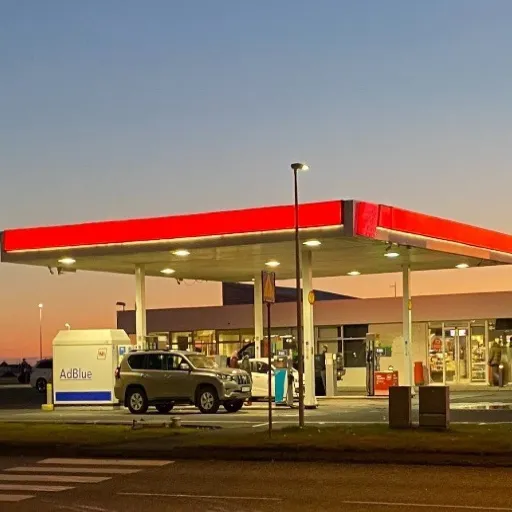
Gas stations generate revenue through several key streams. Fuel sales are the primary source, accounting for a large percentage of the station’s revenue. The next primary revenue source is convenience store sales, which consist of goods ranging from snacks and beverages to everyday essentials. Gas stations often offer car washes and auto repair services as additional sources of revenue. Some locations also partner with fast-food chains or coffee shops, in which case they receive profit-sharing revenue or lease payments. These alternative income streams ensure the gas station remains in business and competitive while fulfilling a diverse panoply of customer needs.
Gas Sales: The Primary Revenue Source
Gasoline sales remain one of the most significant sources of revenue for most gas stations. In other words, a gas station earns primarily from the sale of gasoline. However, fuel sales have a very low profit margin, with prices ranging from 3 cents to about 7 cents per gallon. The center lies in the fuel purchase price, transportation costs, and taxes levied on the commodity. By volume, the majority of a gas station’s revenue comes from fuel sales. For example, a station could sell thousands of gallons of fuel daily, with sales reaching upwards of millions of dollars annually, depending on its traffic and location.
The pertinent data also shows that fuel demand varies with economic conditions, seasonal trends, and crude oil prices. For instance, during peak summer vacations and holidays, more people take road trips. During such periods, there is an upward trend in fuel sales—additionally, stations price fuel competitively to attract customers, who often purchase high-margin items inside the store. While fuel remains the most significant draw for consumers, gas stations are constantly evolving with market demands to provide cleaner fuel alternatives like compressed natural gas (CNG) and EV charging, anticipating a diversified energy future.
Convenience Store Sales
Convenience stores are pivotal contributors to the profit structure of gas station enterprises, often witnessing higher margins than fuel sales. Snack foods, drinks, and pre-packaged items, however, lead the list of categories and constitute a significant portion of the revenue in-store. Data from 2023 reveals rising sales of cold beverages, primarily due to consumers seeking convenience and instant refreshment. Tobacco products and lottery tickets continued to generate significant revenue, although a decline is being observed as consumers shift toward healthier lifestyles.
A surge in hot food sales has been observed in recent years, with pizza, sandwiches, and breakfast burritos becoming increasingly available, particularly in stores equipped with modern kitchens. This reflects the increased demand for ready-to-eat foods, with double-digit growth reported in some chains for fresh food. Other means of fostering repeat visits include loyalty programs and mobile app integration, where some vendors offer discounts or promotions for repeat purchases. Combining all these strategies with the growth of healthier snack alternatives and gourmet coffee indicates a rapidly evolving convenience store industry reacting to changes in customer preferences.
Additional Services and Products
To stay competitive and fulfill the needs of time-strapped consumers, convenience stores are expanding their scope. The array of services offered by the larger chains includes in-store banking, where consumers can access an ATM or basic financial services. Parcel shipping and receiving points have become increasingly popular with the rise of e-commerce, making the convenience store a vital last-mile delivery network. Industry data suggest that nowadays, approximately 40% of urban convenience stores offer some form of parcel service, which has significantly facilitated customer convenience.
Additionally, stores are introducing self-service kiosks and digital payment methods to provide one of the fastest shopping experiences. This technology also helps reduce customer waiting times, thereby improving their overall experience. Foodservice, on the other hand, remains a significant focus, with data indicating that nearly 60% of customers entering convenience stores are seeking fresh, ready-to-eat meals. Stores have responded by partnering with local suppliers to offer high-quality, ready-to-eat food that reflects consumer preferences for a fresh, healthier alternative.
Of course, convenience stores are also seeing a rapid growth in the installation of EV charging stations. Reports indicate that by 2030, as many as 25% of new vehicles may be electric, prompting stores to prepare for this change by installing charging points and attracting environmentally conscious drivers. Such outside-the-box services and product ranges are one way convenience stores adapt to modern trends and technological growth, better catering to their customers.
Understanding Gas Prices
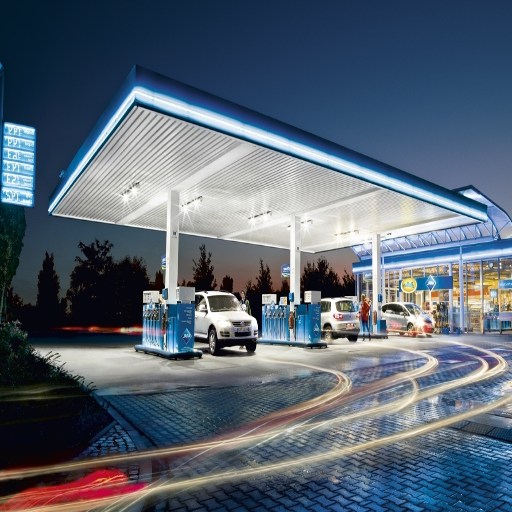
Gas prices are influenced by several key factors, including the cost of crude oil, taxes, refining, distribution, and demand. The price of crude oil, which is primarily driven by global supply and demand, is the primary determinant. Government levies or fees can also weigh into the price paid at the pump. Similarly, prices fluctuate with the costs of refining crude oil into gasoline and transporting it to the stations. Seasonal changes, such as more fun days on the road in summer, can also affect prices. All these combine to set the price at which consumers purchase gasoline.
Factors Influencing Gas Prices
Gasoline prices are influenced by several interrelated factors, with crude oil prices being the most significant in this regard. Crude oil prices fluctuate in response to global supply and demand conditions, geopolitical developments, and the decisions of oil-producing countries, primarily OPEC. Changes in refining costs affect gas prices, as the levels of desired processing vary depending on the type of crude oil. Any troubles in refining facilities may lead to rising prices.
Transportation and distribution costs are another contributing factor, which vary depending on how far the gasoline must travel from the refinery to the retail station, as well as any constraints present on the infrastructure in that region. Additionally, government taxes and environmental regulations come into play—the rates at which some regions impose taxes directly affect the prices consumers ultimately pay. Seasonal adjustments, such as the summer driving peak, often cause temporary price increases, while supply chains disrupted by severe weather conditions contribute to further price fluctuations. These factors collectively contribute to gasoline prices on both regional and global scales.
How Gas Prices Affect Sales
With fluctuating petrol prices, changes in sales trends occur, one of which is artfully linked. The closer an industry is connected with consumer spending and transportation, the more susceptible its sales are to fluctuations in petrol prices. When the price of petrol increases, disposable income tends to decrease because most households now allocate a larger share of their budget toward fuel. In such cases, non-essential spending will have to be reduced, affecting industries such as retail, entertainment, and food services. On the other hand, when gas prices decline, the consumer’s image is painted in a positive light, and savings from fuel costs are reinvested in discretionary purchases.
Another way gas prices affect businesses is through transportation and logistics expenses. Increasing fuel prices, in effect, mean an increase in shipping and delivery costs, which would then lead to higher product prices and, consequently, reduced demand. For instance, recent market trend data suggest that e-commerce sites involving large shipments were affected by fuel price volatility; companies had to either absorb increasing costs or revise their pricing policies.
In broader terms, gas prices also have a significant impact on industries such as the automotive industry. An increasing trend in fuel prices generally leads to increased interest in fuel-efficient or electric vehicles, as their owners seek a measure to keep operating costs down in the long run. Industry reports indicate that gas prices affect electric vehicle sales, which have seen an upward trend in response to rising gas prices.
These interactions make gas prices one of the main drivers of ripple effects across economic sectors. This comports with changes in consumer behavior and the environment in which business is conducted. Organizations must, therefore, remain flexible by forecasting these consequences and developing strategic roadmaps to minimize setbacks or maximize opportunities.
The Role of Tax in Gas Prices
Cents put there by Uncle Sam and the local taxman are what go into the pump price for gasoline. These are customarily imposed at the federal, state, and sometimes local levels, constituting a significant portion of the costs that marketers pass on to consumers. The average federal gasoline tax in the United States is 18.4 cents per gallon, whereas diesel is taxed at 24.4 cents per gallon. It therefore follows that in states, there may be significant differences, with some states charging extremely high rates to fund infrastructure projects, road repairs, and other services.
California offers a case in point, with gas prices consistently among the highest in the United States, partly due to the state’s special gasoline tax, which stood at over 68 cents per gallon in 2023. This is in addition to a multitude of fees administered by environmental regulatory agencies and fuel standard-setting bodies.
Looking at this globally presents an interesting picture, with countries such as the Netherlands and Germany setting taxes so high that roughly half of the cost of a liter goes to tax, all aimed at discouraging the use of fossil fuels and encouraging safer alternatives.
Understanding these tax structures explains why gas prices vary from one region to another. Although it is a primary source of income for governments, it also influences consumer consumption patterns regarding fuel-efficient automobiles and alternative modes of transportation.
Profitability and Operating Costs

The tight margins rule the profitability of fuel companies due to their high volume of sales. Typically, a retailer earns only a small amount of profit for every gallon of fuel sold, with most of the revenue needed to cover operating expenses, such as transportation, wages, and maintenance duties in their respective stores. Operating expenses vary based on the location, supply chain logistics, and local tax requirements. Apart from refined fuel prices and taxes, which significantly impact the costs, operational efficiencies and market demand remain essential factors in maintaining profits.
Fixed and Variable Costs for Gas Stations
Gas stations incur fixed costs and variable costs during their operation. Fixed costs are those that remain constant regardless of the sales level; examples include rent or mortgage payments for the property, electricity, water bills, and insurance premiums. Often, maintenance and upkeep, including fuel pump maintenance and storage system maintenance, can be considered fixed-cost maintenance, as these are essential for the station’s long-term upkeep. Variable costs, however, fluctuate with sales volume and customer demand, and include charges for wholesale fuel, which can vary significantly depending on the global oil price. Additionally, replenishing convenience store stock is a variable cost if the gas station operates a retail outlet. Labor-related expenses constitute yet another variable cost, particularly when staffing is seasonal or peak hour-specific.
The gross margin from fuel sales is approximately $0.30 per gallon on average, with most of the margin allocated to operations and maintenance costs. Fixed costs, such as property leases, may range between $15,000 and $30,000 per annum, depending on the location. Other expenditures on utilities and employee wages contribute to total costs; the monthly electricity range is between $2,000 and $3,500, with labor accounting for on average 10-15% of revenues. Ensuring that you understand and manage these varied costs is essential to generating profits in such a fiercely competitive market.
Profit Margins on Gas and Other Sales
The profit margins in the fuel retail industry are often narrower than one would expect, primarily due to the fluctuating nature of fuel prices and associated costs. On average, gas stations earn approximately $0.03 to $0.07 per gallon of fuel sold. This essentially translates to net margins of only 1-3% on fuel sales, as most of the revenue is allocated to wholesale, transportation, and taxes.
As such, the real profitability of a gas station often lies in its non-fuel sales. Convenience store items, food, and beverages typically enjoy astronomically high margins, ranging from 30% to 50%. For example, prepared food items such as hot dogs and coffee enjoy margins of over 50%. Similarly, automotive products like motor oil and windshield fluid generate high profits, boasting margins of over 40%.
In today’s competitive environment, it is evident that diversification of revenue streams is a pressing need. By joining fuel sales with high-margin products in-store, gas stations can offset the low profitability of gasoline and enhance their overall financial performance. Additionally, effective pricing strategies, loyalty programs, and product enhancements can also improve customer retention, ensuring steady revenue growth.
Strategies to Increase Profitability
Optimize Product Placement and Store Layout: A well-organized floor plan that promotes impulse purchases can significantly boost sales. Statistics indicate that placing products strategically and negotiating to increase sales of high-margin products can result in up to a 30% increase. For instance, if snacks, soft drinks, and small essentials are put in profuse avenues, the products shall spontaneously gain customers’ attention and subsequently increase gross revenue.
Offer a Wider Range of Products and Services: Providing a diverse selection of products and services will cater to a broader customer base. Nowadays, the offering of fresh foods, coffee, and healthier snack options seems to be a trend and a profitable business. Data showed that sales from convenience stores featuring fresh and premium food items have recently grown to become a larger proportion of revenue compared to years ago, reflecting consumers’ demand for top-notch food on the go.
Facilitate Loyalty Programs: Loyalty programs maintain customer retention by rewarding repeat business. These programs also raise patron visit frequency while encouraging them to spend more in each transaction. It is reported that such customers tend to pay 20% more than nonmembers. In addition to these, program members are offered personalized incentives and discount coupons, which enhance the effectiveness of such programs.
Utilize Data Analytics in Inventory and Pricing: By analyzing inventory trends and customer preferences through data analytics, businesses can stockpile items in high demand while minimizing waste on slow-moving items. Dynamic pricing based on demand and competitor prices would thus maximize profits. By analyzing peak sales periods and understanding customer purchase behaviors, businesses can better forecast demand and fulfill it without incurring excessive stocking costs.
Adopting Technologies for Frictionless Transactions: Self-checkout and mobile payment systems offer improved customer experience by minimizing long waits at payment terminals. Institutions that had installed a system of self-service kiosks and cashless payments featured stronger instances of turnover and customer satisfaction, according to studies.
Further Fuel Offerings with Add-Ons: Discounts and offers linking in-store sales with fuel sales lure customers into making purchases within the store. For instance, a promotion comprising discounted coffee or snacks with a fuel fill-up would encourage higher-value transactions. This approach would help increase per-visit profitability and foster guest loyalty among customers.
Following these proactive measures, gas stations and convenience stores will find their business models becoming more sustainable and profitable, while reaffirming the dynamic nature of their relationships with changing consumer demand.
The Impact of Drivers on Gas Station Sales
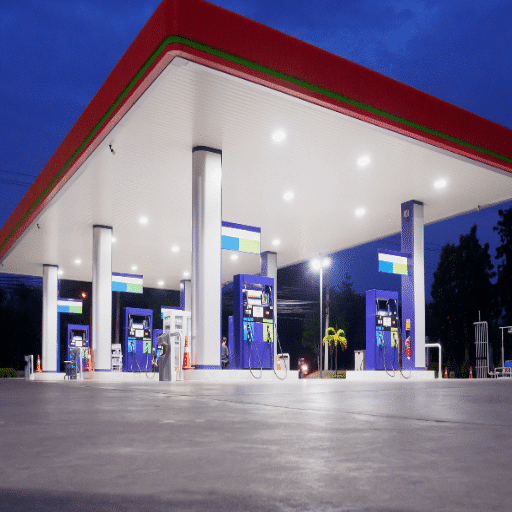
A wide range of drivers influences sales at gas stations through their demand and preferences. Convenience, price, and services are among these considerations. Customers typically visit fuel stations where fuel prices are competitive, services are efficient, and the stations are well-maintained. Extras like food, beverages, or car-care products might just lure a driver to spend a bit more. Such knowledge enables gas stations to tailor their offerings to retain their core customers, ensuring consistent business.
Consumer Behavior and Preferences
In recent years, several factors have influenced the choice of gas stations. Price is important to customers, as many make comparisons to get the best value for their money, especially during times when fuel prices are fluctuating. Cleanliness of the facilities also matters. Stations with clean restrooms and stores tend to attract repeat customers. Technology has become a convenience for patrons, helping them with payments and loyalty points, among other things.
Data has exposed the growing demand for multi-service gas stations. For example, multi-service gas stations that provide freshly brewed coffee, snacks, and quick meals attract more customer traffic compared to those that offer only fuel. With the increase in the number of electric vehicle (EV) owners, charging stations for EVs are becoming in high demand. Consumers are putting more and more emphasis on stations that can cater to both traditional fuel vehicles and EVs, highlighting a massive shift toward a broader acceptance of sustainable energy concepts. By factoring these considerations into their operations, gas stations can therefore cater to a varied set of needs and maintain a competitive edge in the market.
Trends in Gas Consumption
Gas consumption trends have undergone a significant shift in recent years, driven by technological advances, changing consumer behavior patterns, and growing environmental awareness. The one clear trend is that gasoline demand is slowly tapering down, with electric and hybrid vehicles taking center stage. Recent assessments suggest that, on a global scale, gasoline consumption is expected to peak in the mid-2020s and then decline as governments and car manufacturers strive for cleaner energy and carbon reduction targets.
Gasoline consumption is increasingly comprised of regional distinctions. These distinctions are such that, in nearly all of America and Europe, gasoline consumption is falling due to even higher EV adoption rates and stricter emissions regulations. On the other hand, Asian and African developing countries continue to experience a rise in demand as they build their automotive industries and expand their road infrastructure.
Improvements in fuel efficiency cannot be ignored. That is to say that the newest set of motor vehicles operates on an internal combustion engine with a better fuel consumption rate per mile. This, in turn, reduces the gasoline demand even further. Lastly, consumer preferences have been tilting toward fuel-efficient vehicles—almost certainly another technical terminator, especially in places where gasoline prices are relatively high.
The advent of alternative fuels such as biodiesel and ethanol blends has also helped diversify energy consumption. Sales outlets for petroleum products have begun to carry blended fuels in response to evolving energy regulations and increasing consumer awareness.
Where all these factors converge, they collectively sum up the changes in the energy sector around the world, with gasoline still relevant in the near term and slowly giving way to sustainability and new-age mobility means.
How Drivers Choose Gas Stations
When I am shopping for a gas station, I consider a few things. Price is often my top priority, as I seek competitive rates that fit my budget. Convenience is another criterion, for those stations situated on my way offer less time curiously. Another factor is the quality of fuel and options available for blended fuels. The customer service experience might also make a difference, along with some props to the facility, such as a neat convenience store or free air pumps for tires; the kitty might feel experimented with in the bargain. I suppose the balance of expense, convenience, and experience determines my choice.
Reference Sources
“The impact of gas station facilities and service quality on customer satisfaction”
“Optimizing Number and Locations of Alternative-Fuel Stations Using a Multi-Criteria Approach”
“Comparison with Classification Algorithms in Data Mining of a Fuel Automation System’s Sales Data”
Frequently Asked Questions (FAQs)
How Do Gas Stations Generate Profit from Gas Sales?
Gas stations primarily generate profit through the sale of gasoline. They purchase gas at a wholesale price, which is typically lower than the retail price they charge drivers. The difference between these prices, known as markup, contributes to their overall profit. However, the profit margin on gas sales can be thin, often around 15 cents per gallon.
What Role Does the Convenience Store Play in Gas Station Sales?
Convenience stores attached to gas stations significantly boost their profitability. While gas sales may yield low margins, convenience stores sell a variety of products, including snacks, drinks, and essentials, which have higher profit margins. This dual revenue stream is essential for the financial health of station owners.
How Do Gas Prices Affect Gas Station Profitability?
Gas prices directly impact the profitability of gas stations. When wholesale prices increase, gas station owners must adjust their retail prices accordingly. However, competitive gas pricing can limit how much they can raise prices without losing customers. Thus, maintaining a balance between competitive gas prices and profit margins is crucial.
What Are the Costs Involved in Selling a Gallon of Gas?
The costs associated with selling a gallon of gas include purchasing the fuel at a wholesale price, transportation costs, and operational expenses like equipment maintenance and taxes. Additionally, station owners must consider the costs of underground storage tanks and compliance with environmental regulations.
How Do Taxes Impact Gas Station Profits?
Taxes play a significant role in determining the profitability of gas stations. Federal, state, and local taxes can significantly increase the retail price of gas. These taxes can vary by region, impacting how much profit station owners can make on gas sales. It’s essential for gas stations to factor these taxes into their pricing strategies.
What is the Role of Underground Storage Tanks in Gas Sales?
Underground storage tanks are essential for gas stations as they store fuel safely and efficiently. These tanks require proper maintenance to prevent leaks and ensure compliance with environmental regulations, which can be costly. Adequate functioning of these tanks is crucial for the uninterrupted sale of gas and the station’s reputation.
How Do Gas Stations Compete on Gas Prices?
Gas stations often compete on gas prices by closely monitoring their competitors and adjusting their prices to remain competitive and attractive to drivers. This competitive dynamic can lead to price wars, where stations lower prices to attract more customers, impacting overall profitability. Station owners must carefully strategize to avoid sacrificing too much margin.
What Factors Influence the Retail Price of Gas at Stations?
Various factors, including the wholesale price of crude oil, local competition, taxes, and supply chain costs, influence the retail price of gas at stations. Additionally, the price per barrel of crude oil and the refining process to convert it into gasoline directly affect the costs that drive retail prices at the pump.

